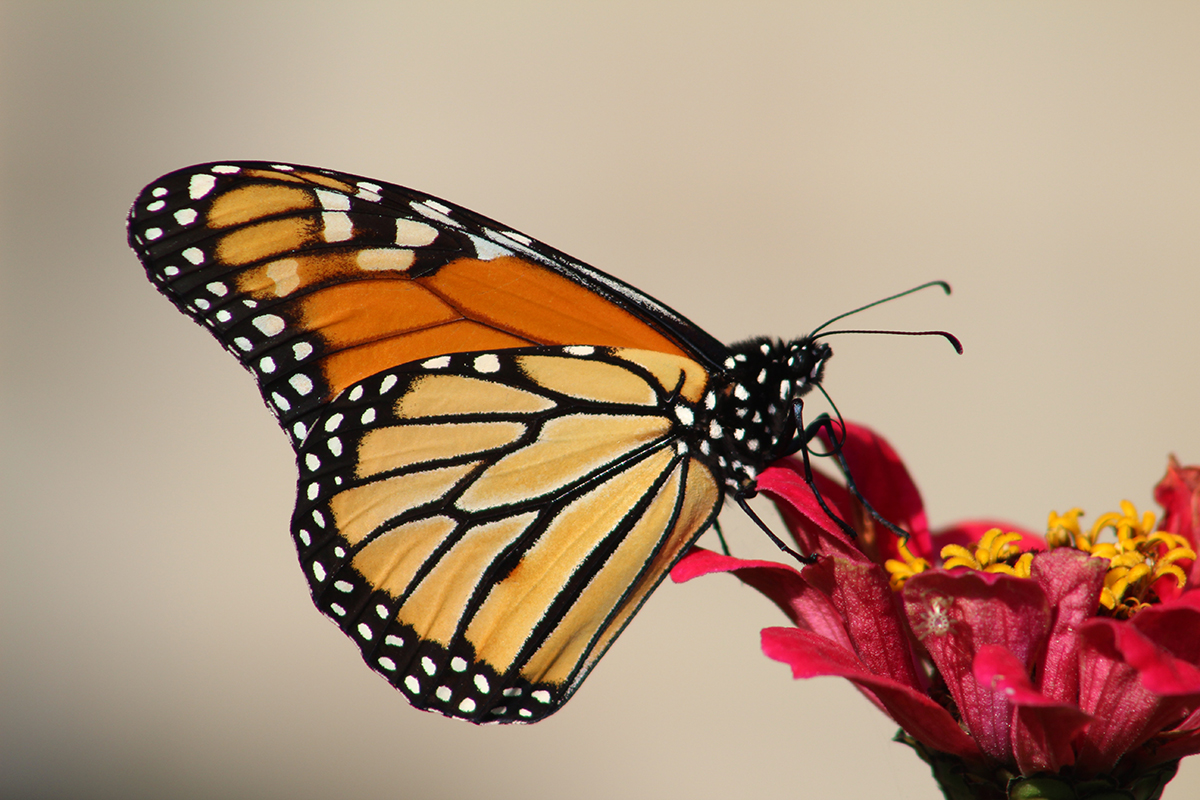
If you feel like you aren’t seeing as many monarch butterflies as you remember seeing 5, 10, or 20 years ago, it’s not your imagination. Habitat loss, as well as pesticides and the extinction of the monarch butterfly host plant (milkweed), have endangered Monarch butterflies.
We all have real power to make a positive difference in protecting the Monarch butterfly and making it thrive. Here are some simple ideas to get you started.
Monarch’s Life Cycle
- The Monarch’s life cycle begins when the female lays her eggs one by one on separate milkweed leaves.
- A few days later the eggs hatch in the larval stage and give us the monarch’s caterpillar.
- The monarch’s caterpillar needs to grow as much as possible. For the next two weeks, she only eats one thing: milkweed.
- The caterpillar is fully fed in the next phase of life and enters the pupal stage by hanging upside down on a plant stem and rotating a protective chrysalis.
- A few weeks later, the caterpillar emerges from the pupa as a fully formed adult monarch butterfly.
- If this is not the time to migrate, the adult butterflies immediately begin the monarch’s life cycle again, that is, after finding a meal of nectar from nearby pollinating plants.
Plant milkweed
Plant milkweed for monarch butterflies and caterpillars to eat, and they will come. Make sure you grow milkweed in full sun, in clusters of at least six plants, or those hungry caterpillars will run out of food quickly. That way, they’ll produce enough nectar for all of the wonderful butterflies that visit your garden. You should also:
- Try not to use pesticides and look for natural solutions whenever possible.
- Provide runways near water sources so butterflies can drink safely (puddles of mud are ideal as butterflies receive the necessary minerals.)
- Butterflies like safe spaces where they can sit at night, such as trees and bushes or flat rocks in the sun for the butterflies to relax.
- Take care of plants carefully – a life cycle can occur under a tree leaf at any time! Stay away from using peat-based compost.
- You can even go the extra mile and register your place as a Monarch Waystation.

Monarch’s Migration Paths
Monarch’s can be found in three different regions across the United States and each one has its own migration path.
- The population found in Southern Florida does not migrate.
- Monarchs on the west of the Rockies migrate each fall from Western Canada to the coast of California near San Diego and Santa Cruz to spend the winter.
- In the eastern region of the Rocky Mountains, Monarchs migrate in the fall by several different paths originating in central and Eastern Canada and the Northeastern United States.
The migration routes of the three populations merge in central Texas. The entire group continues their migration together towards central Mexico and stays through the winter in the mountains, in the forests of Oyamel.
This amazing journey to the south is done in just one generation.
Migration Dates
Monarch’s migration depends on different factors such as the temperature and how long days are, but it should be like this:
- Peak Monarch sightings coincide with the start of their journey south on August 18-30.
- The majority of the Monarch Population can be seen in overwintering Locations from November 10-22,
- Monarch’s first generation to migrate north starts in March and continues until their fourth generation around August.
How Do Butterflies Benefit Us
These are only a few of the many ways that butterflies benefit our gardens, other wildlife, and us:
- Monarch habitats attract other pollinators too, which supports the resilience of the ecosystem and help to maintain our diverse food supply.
- Plants that usually attract butterflies also help contribute to the habitat of birds and waterfowl.
- Native Monarch plants protect against soil erosion and improve water filtration thanks to being deep-rooted are deep-rooted, they also bring lots of colors and cheer to your garden.
- More Pollinators mean more plant growth, which in turn cleans the air, improves soil quality and combats carbon emissions.
- Naturally beautiful green spaces are becoming even more important as we become more urbanized, they help us all maintain physical and emotional health and well-being.

